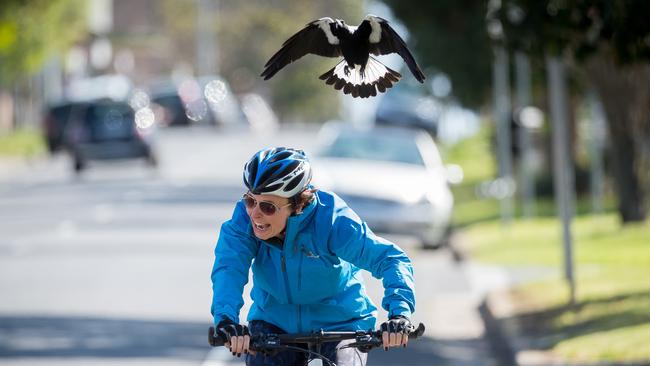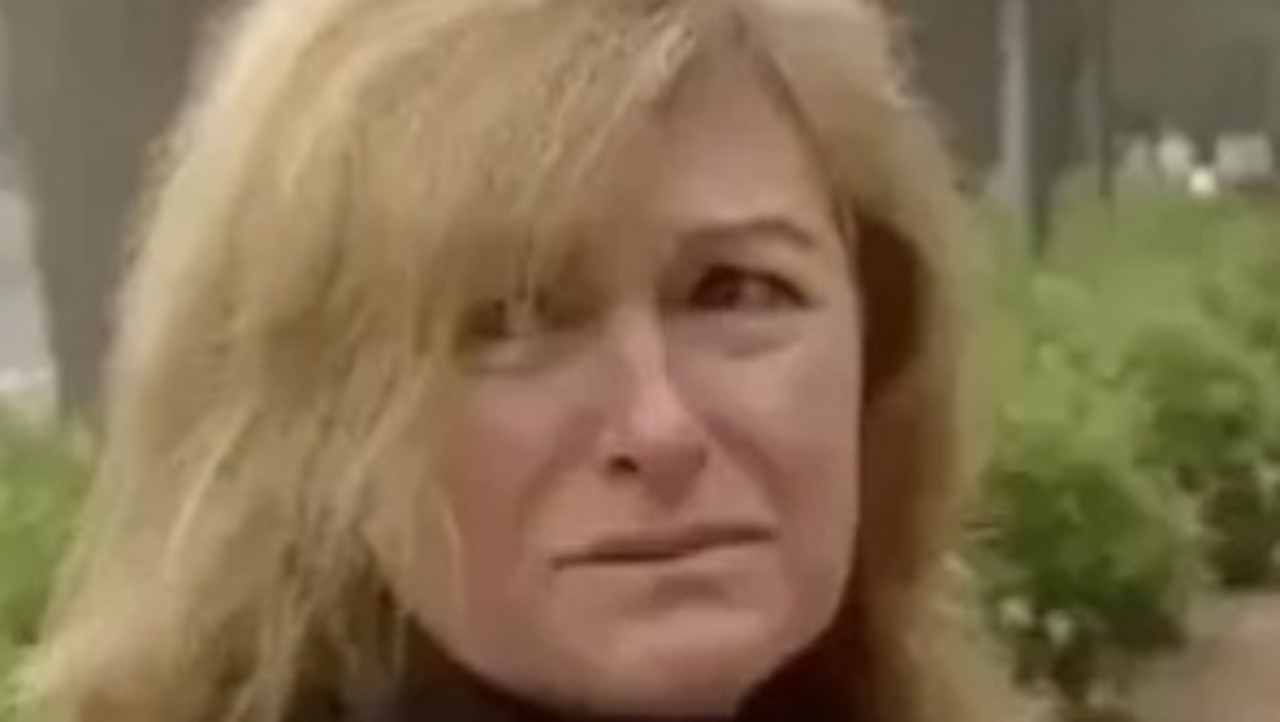Magpie swooping hot spots emerge as breeding season heats up
A SLEW of swooping magpie reports, including one of a woman being pecked near her eye in St Kilda, have emerged across Melbourne as breeding season begins.

Inner South
Don't miss out on the headlines from Inner South . Followed categories will be added to My News.
A WOMAN narrowly escaped serious injury after a dive-bombing bird pecked her near the eye in St Kilda last week.
The incident joins a growing list of swooping magpie and magpie-larks reported across Melbourne as the breeding season takes hold.
HAVE YOUR SAY: Where have you been swooped? Tell us below
Port Phillip Council has already had four calls about bombarding birds in seven days.
Mayor Bernadene Voss said it was common to get more than 20 calls during swooping season, which typically runs from late August to October.
Cr Voss said while a woman had received a minor injury near her eye after being pecked by a magpie-lark, most incidents didn’t result in harm.
“It’s important to remember our native birds are protected and must not be harassed or injured,” she said.
“Birds swoop to protect their eggs or young in the nest during breeding season.”
The Department of Environment, Land, Water and Planning (DELWP) runs the Victoria Magpie Map with swoop sites reported this month in the city, Carlton, Cranbourne, Belgrave and Keilor, where a magpie-lark is reportedly stalking the entrance to the local primary school.
A pair of magpie larks were also reported near the corner of Chapel St and Dandenong Rd in St Kilda.
August to October is magpies breeding season, according to DELWP, which advises the birds may swoop on intruders if they feel threatened. The smaller magpie-larks, also known as Mudlarks, Peewees or Murray magpies, breed from January to December and their attacks can lead to serious injury.
Boy, 4, left blind in one eye after magpie attack in Toowoomba
The privately run magpiealert.com shows the inner northern suburbs of Carlton, North Melbourne and Parkville have a small squadron of the angry birds attacking locals.
Most of the website’s reports have come in this month with swoop sites dotted throughout the city from Langwarrin in the southeast to Warburton in the outer east, Whittlesea in the north and Caroline Springs in the west. An injury from a magpie attack in St Kilda has been reported on the website this year, as well as a near miss. Both were near Dandenong Rd.
Authorities are warning people to avoid the territory of swooping magpies if possible or take precautions.
DELWP says its map is used to understand why native birds swoop and help people avoid them or take precautions if they need to enter swooping areas.
Cr Voss urged people to wear a hat or attaching a pair of “eyes” to the back of their bike helmets.
She said while council officers were keen for public safety concerns or incidents relating to swooping birds to be reported to them, native birds were protected and could not be removed by the animal management team.
Academics and scientists have studied swooping magpies, sometimes seriously and sometimes with tongues firmly planted in their cheeks.
A paper by academics from Deakin and Griffith universities — Attacks on humans by Australian magpies (Cracticus tibicen): territoriality, brood-defence or testosterone? — concluded brood-defence was the cause. Testosterone levels were ruled out because they peaked immediately after laying and not during the peak period of the attacks.
In 2009 a group of CSIRO scientists from Canberra tested a few bike helmet adornments on a swooping magpie with limited success. A clown-style wig worked but cable ties and fake eyes failed to keep the maggie at bay.


